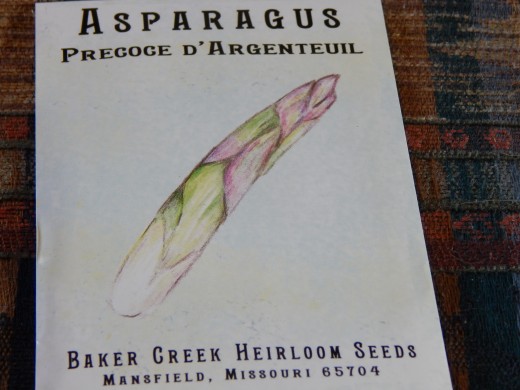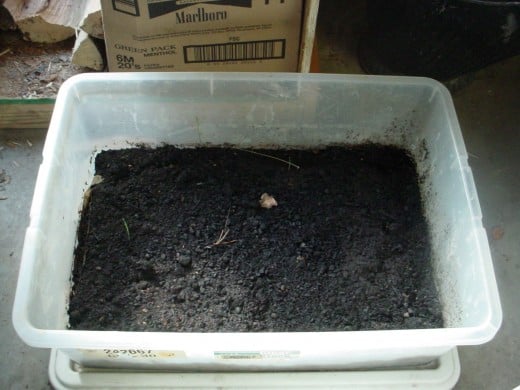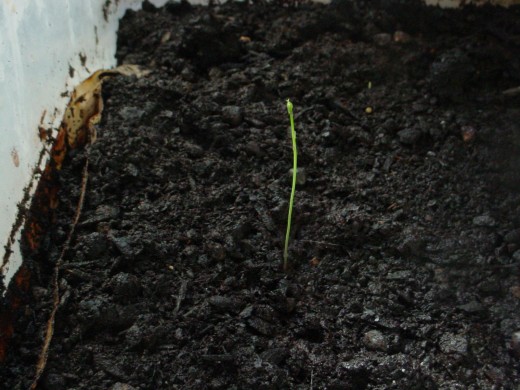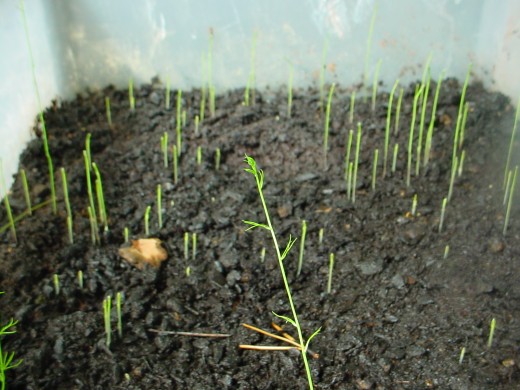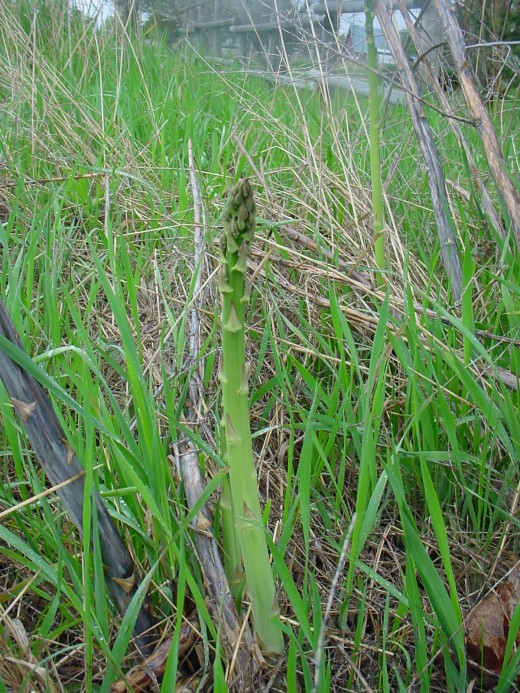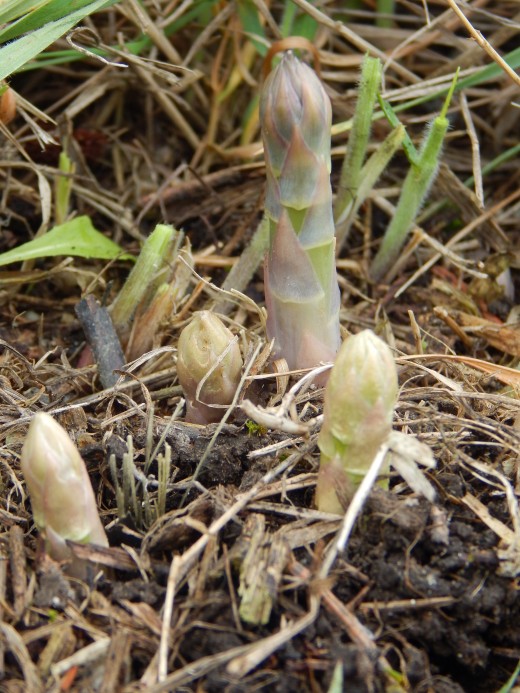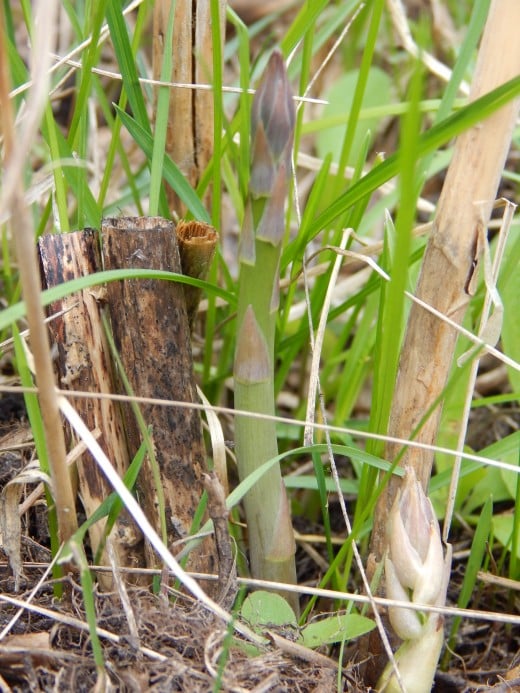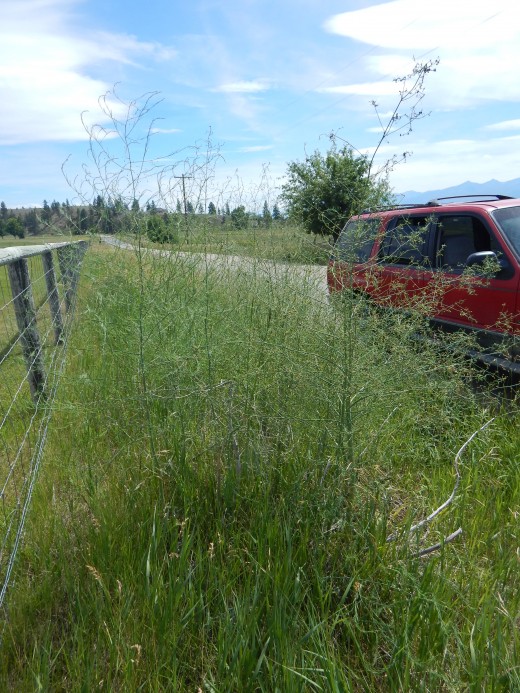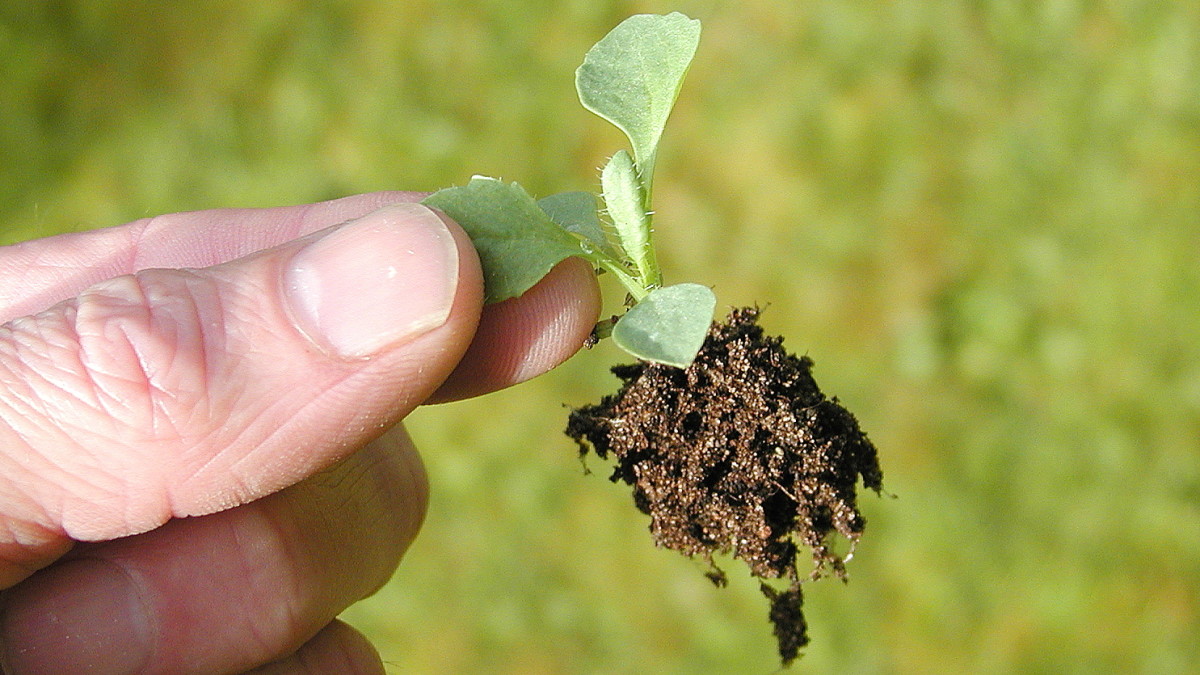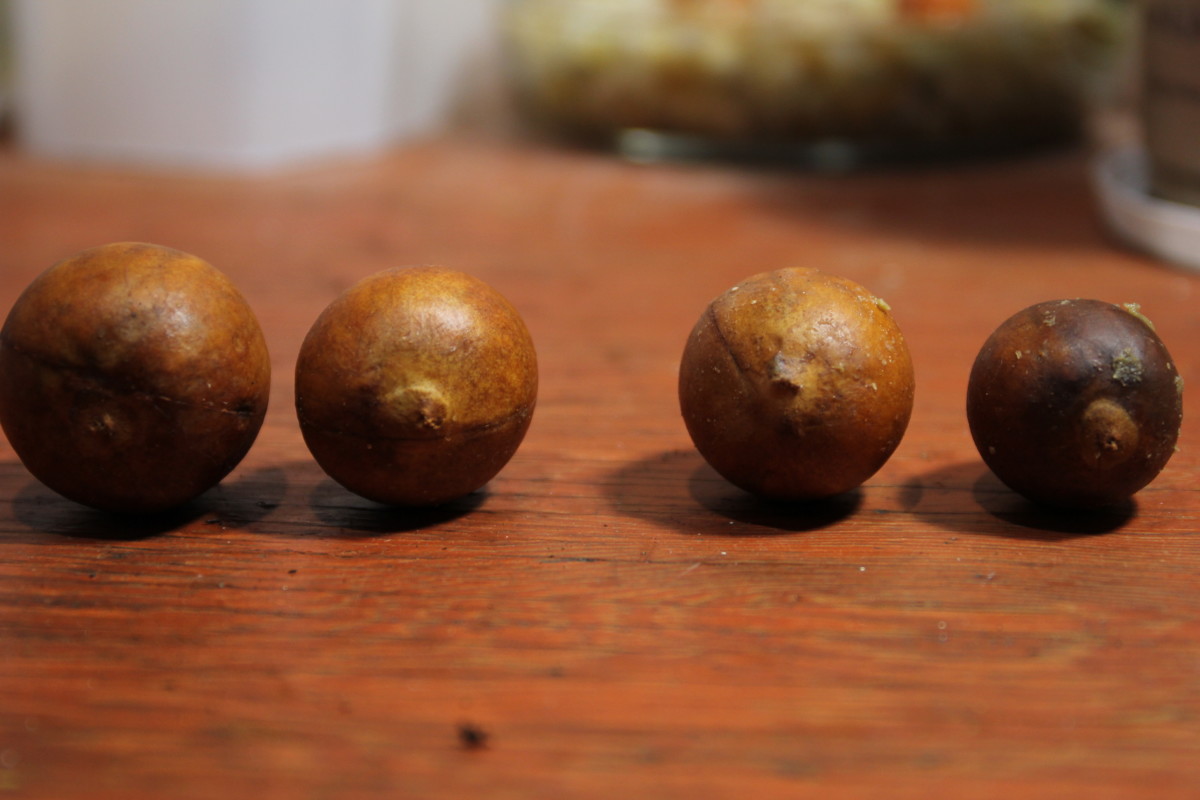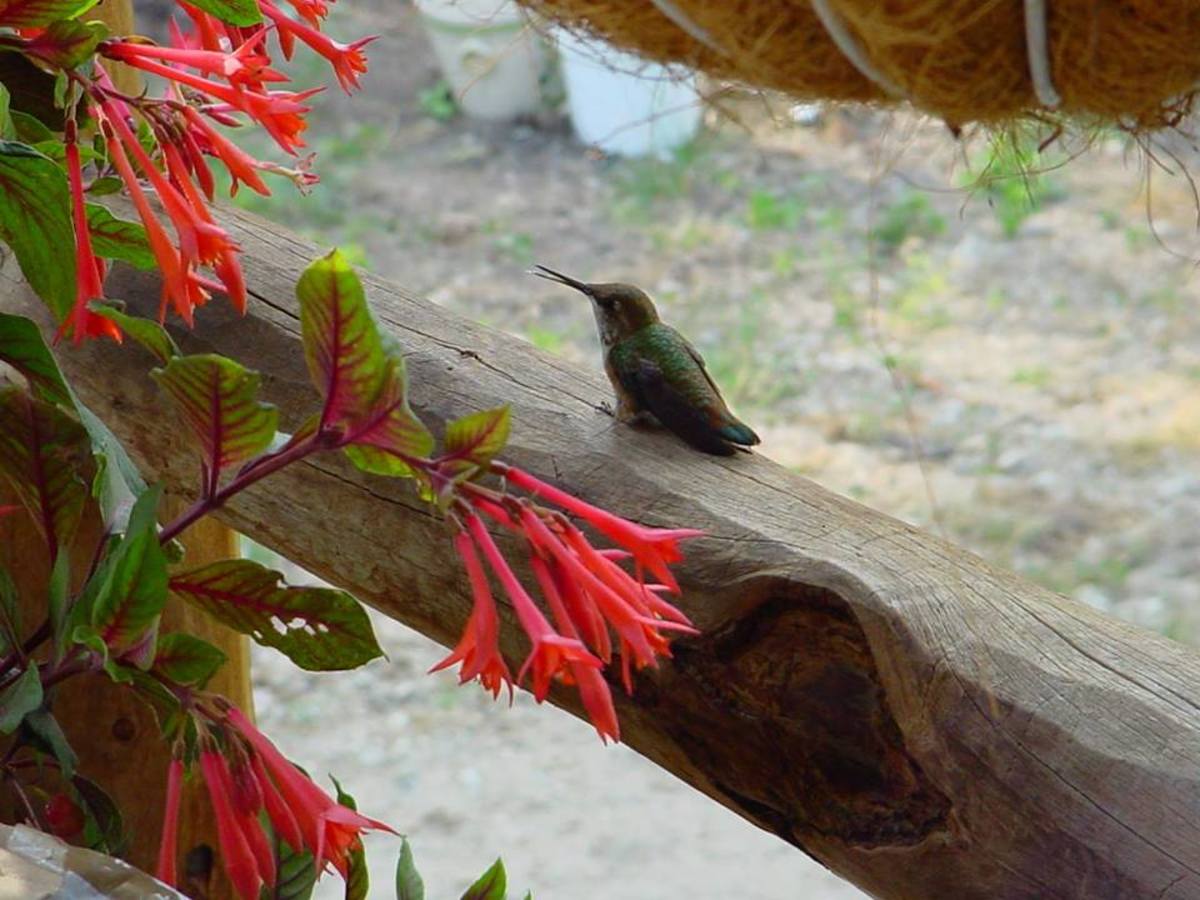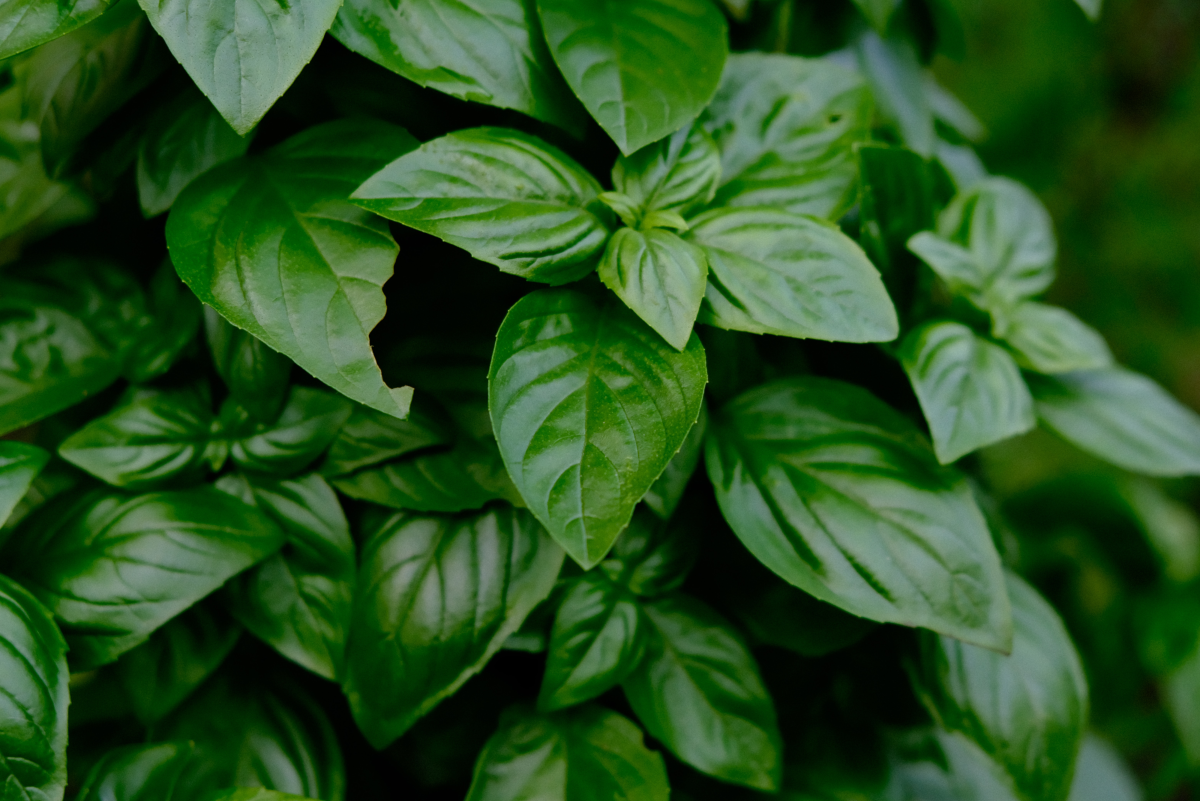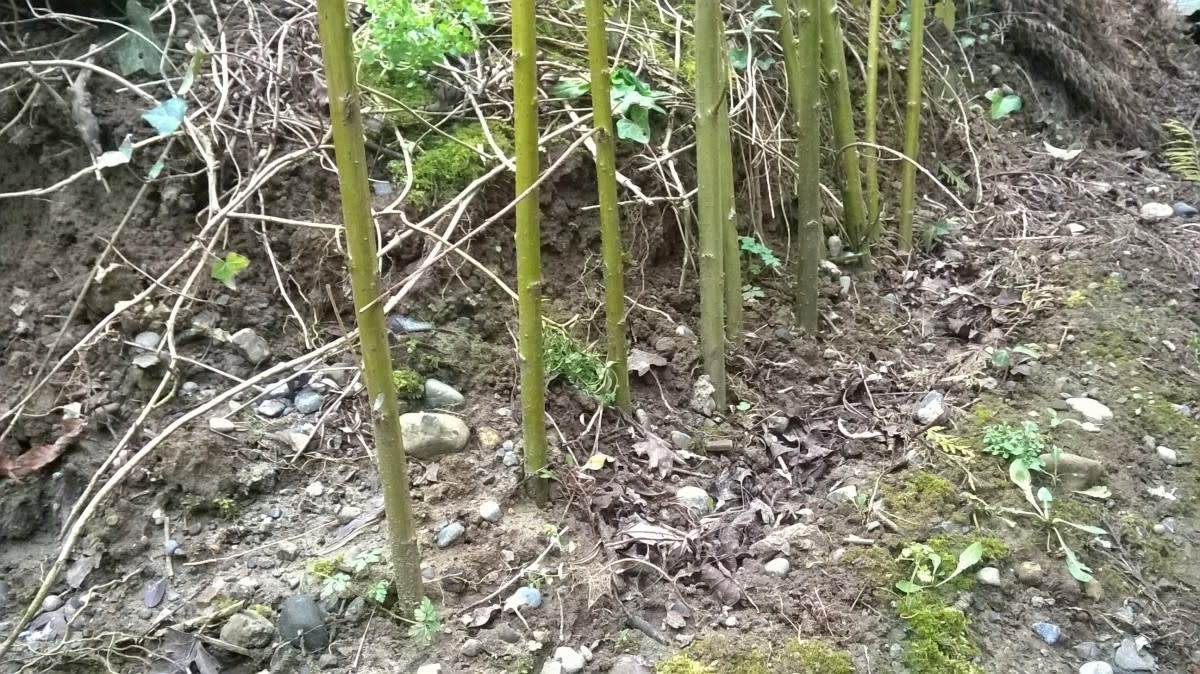Permaculture: Adding Asparagus to the Backyard Habitat
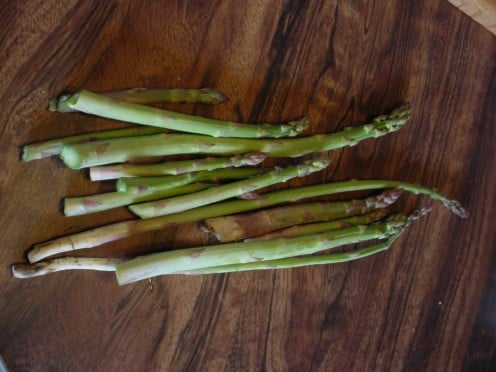
I love asparagus.
In the tiny rural community where I live, there is an unspoken tradition. Find the asparagus first. As soon as temperatures start to warm, the hunt is on. Of course, being a perennial, asparagus comes back every year. It also goes to seed and new patches can spring up. Regardless, the battle begins, first one to harvest asparagus, wins.
The patches are old. Leftover from the settlers. Farmers and ranchers carefully mow around those patches as best they can. None of the wildlife graze it so nothing to worry about there. But if Nancy beats me to my patch again this year...
It really is a battle and every oldtimer has his/her secret "spot". After the asparagus harvest everyone gloats of their bounties and then it's steamed asparagus for dinner. It truly is an awesome tradition, but I love asparagus, and there just isn't enough for all of us. So I decided to start some new patches.
Asparagus for the Habitat
Asparagus is a perennial zoned 3-8 . It's drought tolerant. It has no bug problems, no wildlife grazes it, and it's low maintenance. Worst part about asparagus is the wait...three years...
Around here it grows along the fence lines of pastures and field crops. It was planted by the early settlers and marks where fields and homesteads once where. Almost every backroad has a patch of asparagus. And we have a lot of backroads. There are still historical homes throughout our tiny community and near each a patch still grows.
Asparagus came to us from Europe via the early settlers. It's been a prized vegetable for centuries, so it's no wonder there are so many patches.
In the beginning, gravity fed irrigation and Spring thaw/runoff was how the fields were watered. Asparagus was planted in the full sun where it would receive that moisture. Once established, asparagus can be pretty drought tolerant and low maintenance.
From Seed to Harvest
Click thumbnail to view full-size




Starting from Seed
Did you know there are more than one variety of Asparagus? I've found several different ones, purple, green, and white. For someone who loves asparagus, that's exciting.
It takes three years from seed until you will be able to harvest any of your asparagus, and sparsely, that first year. I guess this means I am still in the game.
Asparagus needs deep soil to germinate in. The roots need adequate space to develop. A germination tray is too shallow and I don't want to waste precious window light to potted up asparagus. These guys will go directly into their permanent position after germination and as soon as weather permits.
Using a storage tote for a Mini greenhouse was the best idea I ever came up with. They are opaque, allowing light to penetrate the container. They are deep, and tall so plants have more vertical space to move. They stack, so I can start more than just one of something. And when it is time to acclimate seedlings, the tall sides protect from harsh winds.
I can't say enough good things about these totes.
Place a thin piece of cardboard or a few pieces of newspaper on the very bottom of the tote. You want to fill the tote with 2-3" of seed starting mix. For asparagus I wanted to simulate seeds dropping from the wild plant. I sprinkled the seeds over the medium as evenly as possible, then watered.
Watering: I prefer to use a sprayer. The one attached to the kitchen sink. When starting seeds I try to simulate rain, by evenly and quickly making a pass over the medium. The seeds wil get wet and settle into the medium as they would in the wild.
Snap the lid on and place the tote in a warm position in the house. Sun light won't be important right away, heat is. The soil needs to stay warm. You can use heat mats, or I set my tote near the fire place. Once there are seedlings you can move your tote near a window.
Asparagus is a relatively slow grower. Growth is focused on the root system first. The edible shoots will come from the root. So we want our seedlings getting big and strong. They can live in the tote until transplant in June.
You don't want to rush out and transplant your seedlings until outside soil temperatures match indoor temperatures. This is important. Asparagus can tolerate cold temperatures but your seedlings have to acclimate to outside. When soil temperatures are above 55* you can take your seedlings outside.
During acclimation, place them in partial shade, your seedlings have not experienced direct sunlight yet. They will need extra water to help them through this experience. Slowly give them more and more sun until they are in full sun all day. Once the seedlings are acclimated you can place them in their permanent position.
There are companies that sell asparagus roots. Asparagus roots are planted in early spring when the soil can be worked. You do not want to harvest any stalks from the first year.
Asparagus seed can be purchased from a variety of companies, Mary Washington being the most popular. I purchased my seed from Baker Creek, which is my #1 go to for seed. As you can see from my pictures, germination is always top notch.
Safe Seed Sources
- Item Listing | Baker Creek Heirloom Seeds
Baker creek has three varieties of asparagus to choose from.
Wild harvesting
Asparagus isn't really "wild", but it sounds cool. And I guess if you are wandering about searching for something in the wild.....but it really isn't wild. Because it was brought here, your search begins in the beginning.
Locate a patch.....finding a patch of asparagus can be tricky. You don't just stumble upon asparagus like you do an elderberry or apple tree. We eat the sprouts which are hard to find if you don't know where they are. It's easier to find the patches in July after they have leafed out and are 4' tall. Once you locate a patch you can come back the following summer and pick the asparagus.
You will want to look outside of town, near fields and farmland. The older the homestead the higher your chances of finding the green gold. You'll find the patches along the fence lines. Once you find it you, you won't soon forget, you will be able to see the ferns in summer along the roads as you drive past.
Check out the photos below. Asparagus doesn't look much like asparagus when it matures. It looks more like a giant ferny weed mess.
Mind your manners...old homesteads usually come with old families. Those families know where their asparagus is planted. Just because it's on the "side of the road" doesn't make it fair game. Some homesteads were sold and parted out. Those patches, are fair game. Don't get shot over asparagus.
Asparagus starts peeking its sprouts out in early June when the soil starts warming. Locate your patch of asparagus and check for sprouts. You might have to make several trips back to your patch, you want your sprouts about 6" tall. Use a knife to slice the asparagus stalk at the base. Don't slice all the sprouts. Leave at least one sprout from each plant.
If you take all the sprouts the mother plant can die, which means no sprouts next year. If you are lucky enough to find "wild" asparagus, take care of your patch. It will bring you years of enjoyment.
As is always the case, when wildharvesting any herb, fruit, or vegetable, don't eat it if you are not 100% sure you know what you are eating. I am unaware of any poisonous asparagus look-a-likes, but that doesn't mean they don't exist. Better to be safe than sorry. Your local extension office can verify most unknown plant material.
Wild Harvesting
Click thumbnail to view full-size


I like my asparagus fresh, steamed, grilled, sauteed, with cream sauce and without. Fresh is best but if you find yourself with extra, sprouts can be easily frozen or canned.
I don't think we will ever have enough asparagus. Everytime I see a new (or old) variety I add it to the habitat. This year we look forward to trying Purple Passion. I wish I could see Nancy's face when she finds that purple patch I planted last year. I'll update after we have tried it, but I am banking we will love it.
How do you like asparagus? Share your story...and happy gardening!
© 2017 Kim French

